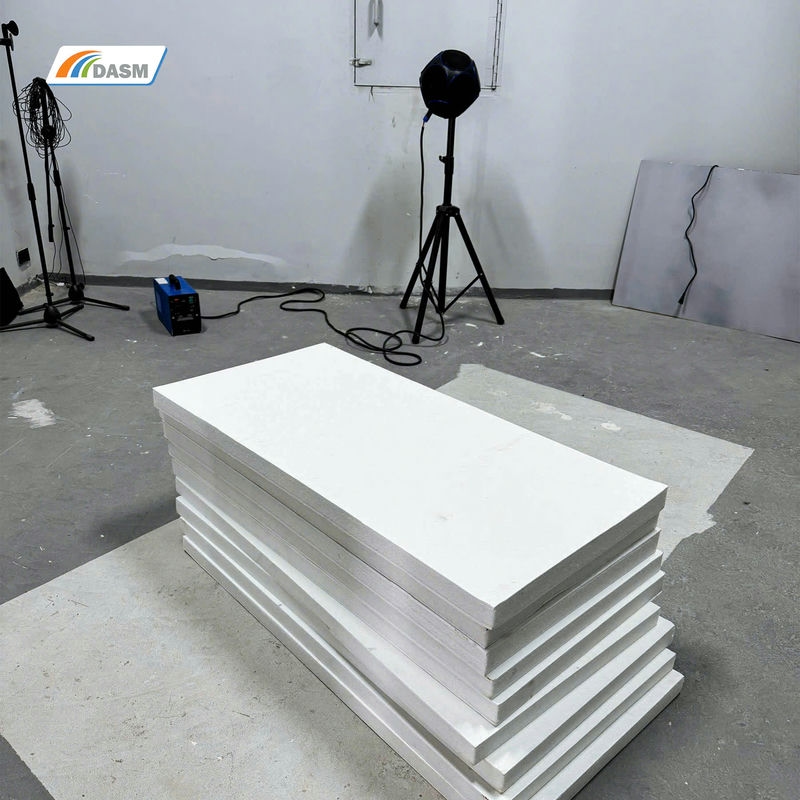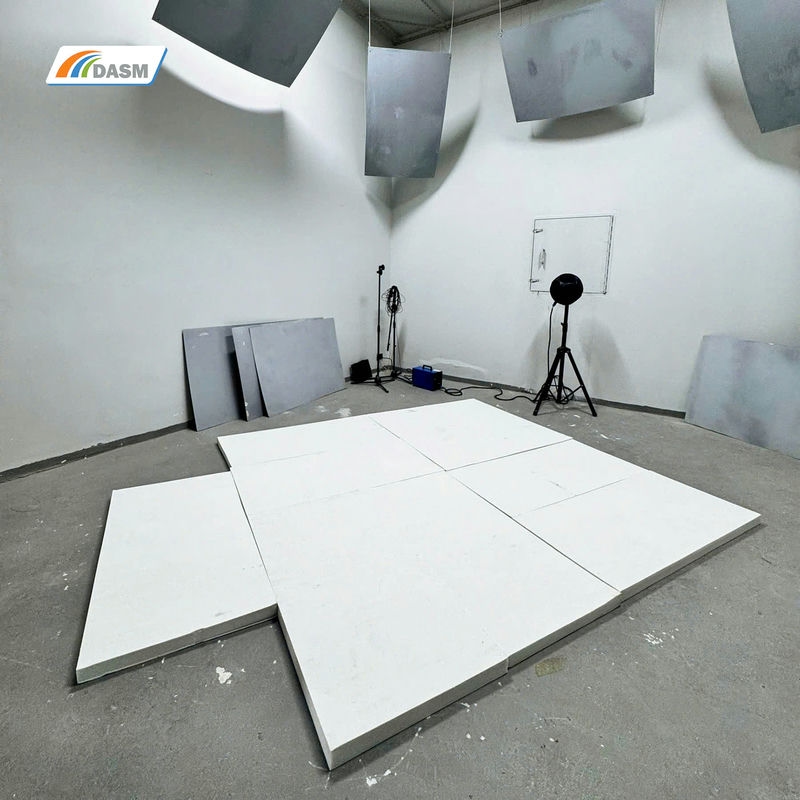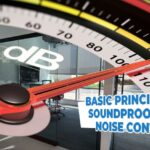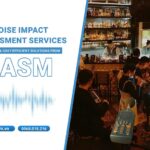Acoustic Absorption Testing – Materials Acoustic Test Service at DASM Institute According to ISO 354 & ASTM C423, helping businesses evaluate and optimize the sound absorption performance of materials. The VILAS-certified laboratory ensures accurate and objective results.

Introduction to Acoustic Absorption Testing at DASM Institute
In the field of acoustics, accurately evaluating the sound absorption capability of materials plays a crucial role in architectural design, interior manufacturing, and professional sound systems. DASM Institute, a pioneering entity in acoustics research and testing in Vietnam, offers sound absorption coefficient measurement services following ISO 354 & ASTM C423 standards.
With a VILAS-certified laboratory, DASM ensures precise and objective results, enabling businesses and manufacturers to assess the acoustic performance of their products, refine designs, and optimize material quality before market release.
Adapter Noise Measurement According to ISO 3745-2012 – Quality Inspection at DASM Institute
DASM Certified for Acoustic Testing Activities
Soundproofing Test of Remak® XPS Foam in an Impedance Tube at DASM
What is the Sound Absorption Coefficient?
The Sound Absorption Coefficient is a key indicator that measures a material’s ability to absorb sound waves. This coefficient ranges from 0 to 1, where:
Coefficient = 0: The material reflects all sound (e.g., metal surfaces, glass, rigid concrete).
Coefficient = 1: The material absorbs all sound (e.g., mineral wool, specialized acoustic foam).
Determining this coefficient helps evaluate the effectiveness of acoustic materials, ensuring compliance with technical requirements in construction and industrial applications.
Acoustic Absorption Testing Methods at DASM
Testing Standards
At DASM, sound absorption coefficient measurement is conducted based on two internationally recognized standards:
ISO 354: Reverberation Room Method, assessing the material’s sound absorption in an environment with multiple sound reflections.
ASTM C423: A widely used method in the United States, measuring the absorption coefficient across a broad frequency range.

Testing Procedure at DASM
Sample Preparation
Material samples are prepared according to ISO 354 or ASTM C423 size requirements.
Samples are placed on the floor or mounted on a test frame depending on the application.
Measurement in a Reverberation Room
DASM’s reverberation room meets international standards, ensuring optimal acoustic conditions.
A system of microphones and signal receivers records changes in sound energy levels with and without the test sample.
Data Analysis
Collected data is analyzed to calculate the absorption coefficient across different frequency ranges.
Test results help clients understand their product’s acoustic performance, leading to potential material enhancements.
Benefits of Acoustic Absorption Testing at DASM
Ensuring Quality and Product Optimization
Precise measurement of the sound absorption coefficient allows businesses to evaluate and enhance material design, improving acoustic performance, reducing noise, and optimizing product features.

International Standard Certification Support
DASM’s test results hold significant value in construction, interior design, and acoustic technology industries. Companies can utilize this data for international quality certifications, gaining a competitive market advantage.
Enhancing Construction and Acoustic Quality
For building projects, testing the sound absorption coefficient assists architects and acoustic engineers in optimizing space design, minimizing echo, and improving the overall acoustic environment in residential and commercial spaces.
Applications of Acoustic Absorption Testing
DASM’s sound absorption measurement services cater to multiple industries, including:
Interior & Architectural Design: Optimizing acoustic materials for offices, hotels, theaters, and meeting rooms.
Acoustic & Soundproof Material Manufacturing: Evaluating product quality before commercialization.
Automotive & Aerospace Industry: Testing the sound absorption capability of materials used in vehicle cabins and aircraft interiors.
Professional Audio Systems: Supporting the design of recording studios, theaters, and conference centers.
Why Choose DASM for Acoustic Absorption Testing?
✔ VILAS-Certified Laboratory – Ensures accuracy and reliability.
✔ State-of-the-Art Equipment – Compliant with ISO 354 & ASTM C423 international standards.
✔ Extensive Acoustic Expertise – Providing in-depth technical consultation.
✔ Fast Testing Turnaround – Helping businesses streamline production processes.
Need to Measure the Sound Absorption Coefficient of Your Material? Contact DASM Institute today for expert consultation and precise, reliable acoustic testing services!








